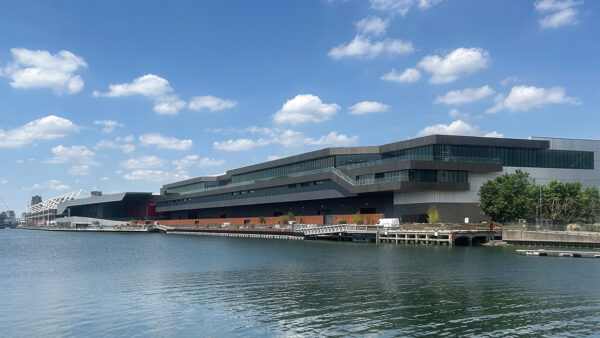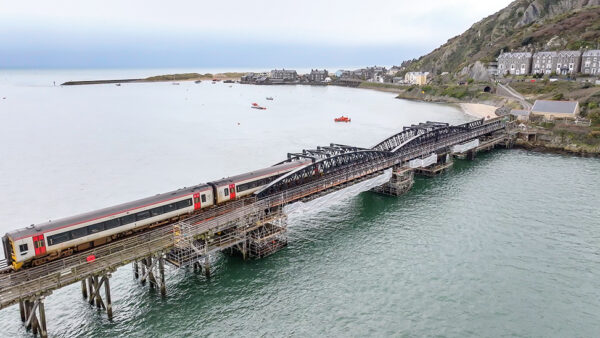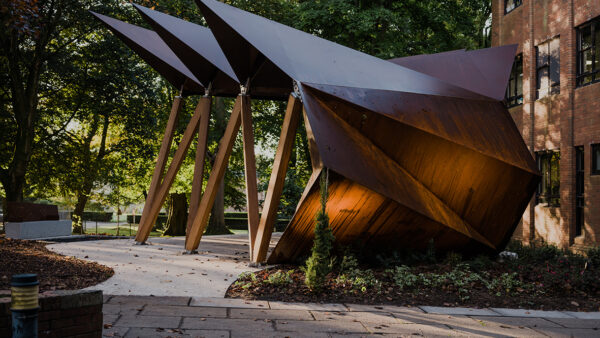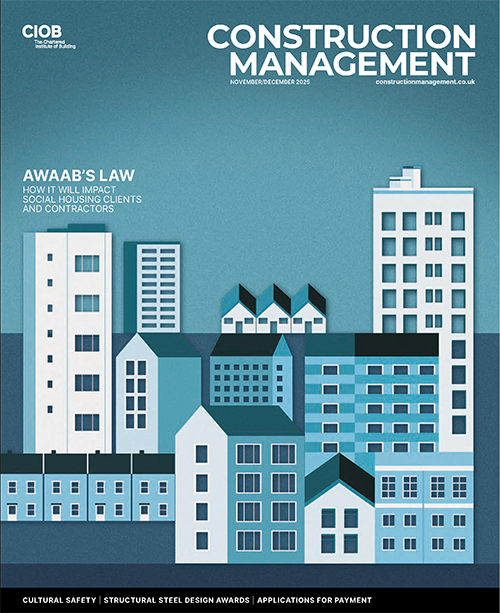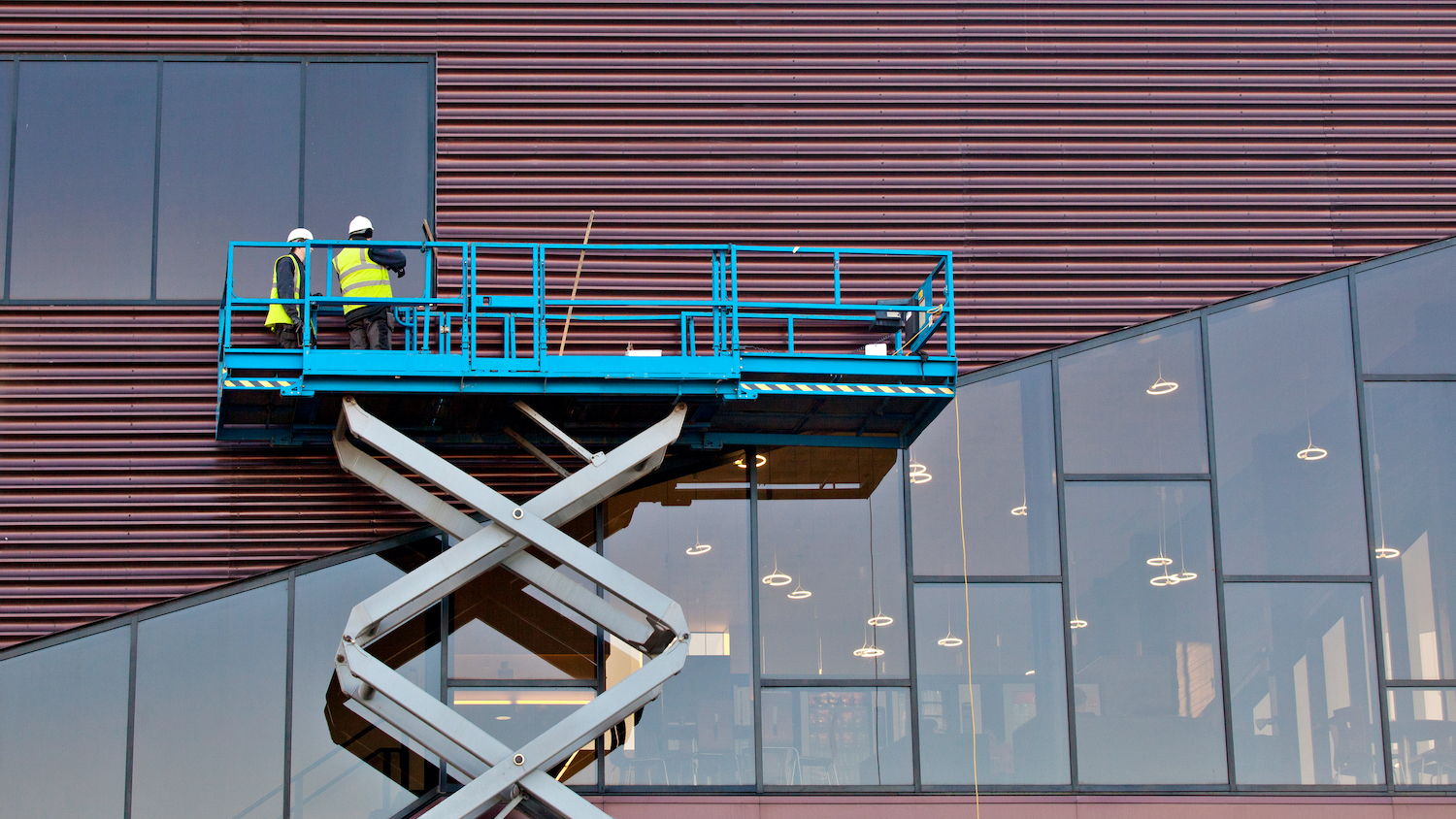Rising temperatures could have you reaching for the air conditioning controls more often, but there is a better alternative. Mott MacDonald’s Monica Donaldson-Balan explains the role of passive solutions.

Prepare for a minimum of 2 deg C global warming by 2050, but don’t rule out having to manage changes in temperature of up to 4 deg C. This was the stark warning issued by the Climate Change Committee last month – and it brings new challenges for building designers.
Ensuring buildings are resilient to more extreme weather patterns created by climate change is one thing. The comfort of people using those buildings, however, is also essential. Greater reliance on air conditioning to do that could contribute to 4 deg C becoming a reality, which is why designers need to prioritise passive solutions wherever possible.
There have already been several guidance documents on the topic, including the Climate Resilience Roadmap, the Overheating Adaptation Guide for Homes, Shading for housing and The Hot Reality. But, while awareness is growing, implementation is lagging and the sector needs to work towards this guidance becoming standard practice.
The imminent update to the Chartered Institution of Building Services Engineers Technical Memorandum 59 (TM59), plus the government-mandated Building Regulations Part O, are part of the solution. When the earlier versions of the CIBSE TM 52 and 59 guidance for domestic and non-domestic buildings were first published in 2013 and 2017, they gave designers a way to assess the level of overheating in buildings and test measures.
The industry now needs to continue applying this guidance with a focus on prioritising passive solutions.
Putting passive first
Understanding the need to prioritise passive solutions to mitigate overheating calls for examination of the realities that greater use of air conditioning could bring. In addition to the capital, maintenance and operational costs, the energy demand of using air conditioning for all 29 million homes in the UK would be significant.
“The energy demand of using air conditioning for all 29 million homes in the UK would be significant.”
In 2021, a report by the then Department for Business Energy and Industrial Strategy (now the Department for Energy Security and Net Zero) put that demand at 6-12TWh, but that passive measures could reduce that by 34%.
The need for greater focus on passive systems is not just about the energy demand, though – the impact of how these systems function and their associated embodied carbon also needs to be factored in. Many individual cooling systems eject the heat they extract externally, contributing to urban heat island effects and raising street-level temperatures.
Passive in practice
Knowing what passive measure options are available for both commercial and domestic buildings is also important to achieving the best results. The measures can be grouped by how they mitigate overheating: preventing solar gain, removing and reducing the heat within buildings, and passive cooling.
Solar gain is one of the key causes of overheating, and external shading is one of the most effective solutions, as it keeps heat out before it enters the building. This can be in the form of external fixed shading, or screens and shutters, awnings and blinds.
The glazing solar control level can also be adjusted, either through an external or internal film, coatings on the glazing unit, or through glazing-integrated PVs. Painting reflective coatings on the roof can also be effective in mitigating solar gain.
Solutions to remove and reduce heat within buildings either focus on preventing heat from being generated through efficient equipment and lighting, as well as insulating heat sources such as hot pipes; or on removing the gain once it is emitted. Examples of how to effectively remove heat after generation include opening windows during the night or early morning. This can be coupled with the use of materials for the interiors that have a high thermal inertia, such as stone or concrete.

Passive cooling options can include the use of water features within or outside a building, as these provide a cooling effect through evaporation, although moisture levels need to be understood if used internally. Similarly, vegetation can provide a cooling effect due to evapotranspiration, in addition to the shading it provides.
Often these solutions can be used in combination to maximise the impact. An example is the Royal College of Art campus in Battersea. Mott MacDonald worked as the lead consultant with architect Herzog de Meuron. The building was designed to have integrated fixed shading, which allows it to work in mixed-mode ventilation with very limited use of air conditioning to cool areas with high heat gain from equipment.
Design considerations
Determining the right solution for each building calls for a careful review of construction, operational and carbon costs. There is also the need to consider how passive measures impact the building’s aesthetics and whether they have implications for planning conditions. The industry also needs to look at how warmer countries deal with higher temperatures and learn lessons from the solutions applied there.
As an example of the financial challenges, external shading brings additional construction costs and could also bring higher maintenance costs. Additionally, external shading can increase design complexity, with greater collaboration needed between different disciplines. Passive solutions and products should therefore be integrated from an early design stage.
Adding more design materials to deliver passive measures may also have an impact on whole-life carbon, and designers need to factor this into their decision-making to determine the right passive solution and the most appropriate material choice.
Use of external shading and optimising window sizes clearly has a significant impact on the visual appearance of the building, which may be at odds with business-as-usual designs, such as fully glazed office buildings. To ensure that such solutions can be explored, their full benefit needs to be explained so that everyone, including the project developer, building owners, project design team and occupants, are on board.
Understanding the local environment is also key to what is a workable solution. There is no point designing a building to use open windows in an area with high noise levels and low air quality. These issues are normally considered as part of new builds, but they will also be critical to the success of retrofit schemes.
Designers must also consider that even taking the right steps during the design phase may still not result in the desired impact if the systems are not operated and maintained properly. For example, shutters and awnings may be left closed all the time, or windows could be opened when the external temperature is higher than the internal one, making internal conditions worse than was planned. Ensuring that occupants and facility managers are aware of how the building should be used and maintained is crucial to achieving the best outcome.
Changing culture and supply chains
Avoiding air conditioning becoming the automatic go-to solution for cooling is clearly beneficial for the environment, but changes in public attitude and supply chains will be vital. Affordability is key, especially in retrofit applications, and the cost of shutters and awnings in the UK is high compared with warmer countries where such solutions have been in long-term use and supply chains are mature. As demand increases, costs will fall, but building designers have a responsibility to promote passive solutions to help drive up the necessary adoption to achieve this.
We already have guidance to support the change to a passive-first approach, but it now needs to become business as usual and being able to point to projects that deliver this well will be critical. These changes are not only better for the planet – they are also better for the wellbeing of the people using the buildings. Done well, they can create new opportunities for architectural design too.
Looking further ahead, it is also encouraging to see the development of smarter and more integrated provision of cooling for the built environment. The development of low or ambient temperature energy sharing networks that make use of rejected heat from cooling is one example of this.
Development of smart controls coupled with storage to allow flexible use of cooling and access low low-carbon and low-cost electricity is another. However, despite these emerging solutions, it is still vital that the basics of design are right, as this will enable further reduction of the impact that these systems have on occupants, the energy system and the planet.
Monica Donaldson-Balan is senior associate building physics engineer at Mott MacDonald.





